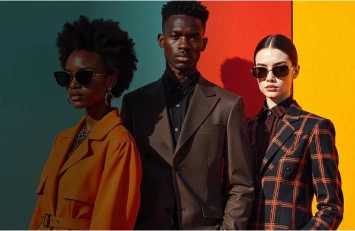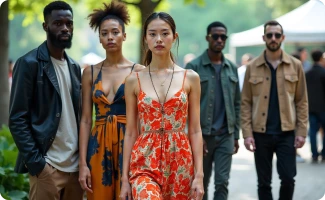
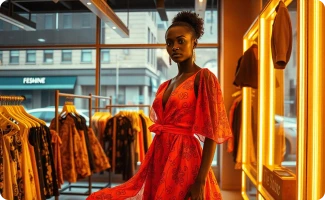
How Generative AI Is Transforming E-Commerce for Brands
Table of Contents
- AI-Powered Product Design and Development
- Hyper-Personalized Shopping Experiences
- Automated Content Creation for Product Pages
- Virtual Models and AI-Generated Imagery
- AI for Trend Forecasting and Consumer Insights
- Real-Time Customer Support with AI Chatbots
- AI-Enhanced Visual Search and Product Discovery
- Smarter A/B Testing and Campaign Optimization
- How Modelia Helps Fashion Brands Use Generative AI
- Comparison of Generative AI Use Cases in E-Commerce
- Conclusion: Why Generative AI E-Commerce Isn’t Optional Anymore
- FAQ: Generative AI e-commerce
The rise of generative AI e-commerce is reshaping how brands design, market and sell products online. From creating on-demand visuals to delivering personalized customer experiences, this powerful technology is unlocking new efficiencies and creative opportunities. As we move into 2025, brands that embrace AI in e-commerce are gaining a competitive edge, launching faster, testing smarter, and reaching customers more effectively.
In this article, we’ll explore the top ways generative AI is revolutionizing e-commerce, from content creation to fashion design, and how it’s impacting both brands and consumers.
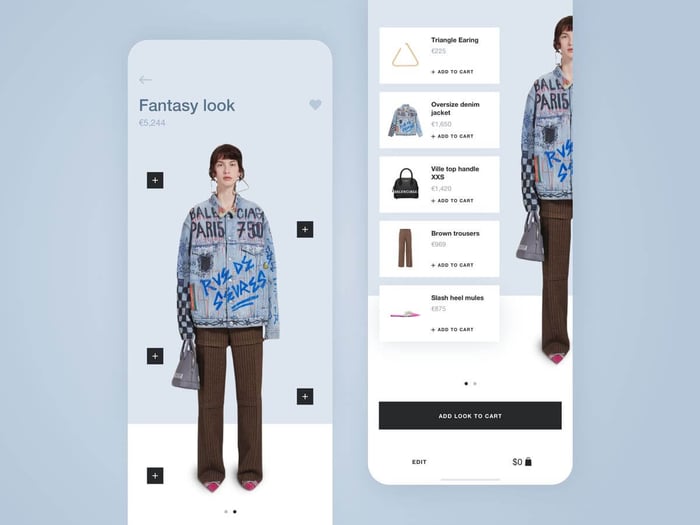
AI-Powered Product Design and Development
Generative AI is streamlining the product design process in e-commerce by enabling brands to rapidly prototype new ideas. Instead of relying solely on traditional design cycles, fashion and retail companies can now use AI models to generate multiple variations of garments, accessories, or product mockups in minutes. This dramatically reduces the time between concept and testing.
Tools like generative design platforms allow designers to input rough sketches or mood boards and receive AI-generated outputs that align with brand aesthetics. By integrating AI into design workflows, teams iterate faster and launch collections with greater confidence. AI in e-commerce is no longer just about backend automation, it’s becoming the creative engine behind product innovation.
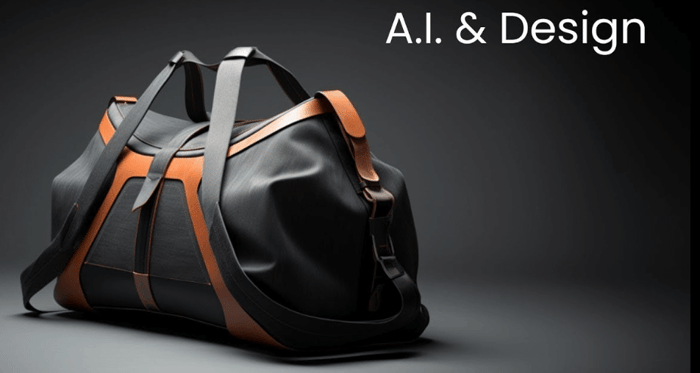
Hyper-Personalized Shopping Experiences
One of the most transformative impacts of AI in e-commerce is its ability to tailor experiences to individual shoppers. Generative AI helps create highly personalized recommendations, dynamic landing pages, and even custom visuals that reflect a user’s browsing habits and style preferences.
Instead of generic product suggestions, AI-driven platforms can dynamically generate homepage layouts, promotional banners, and product displays that cater to each user’s unique journey. Retailers using generative AI in e-commerce are seeing increased engagement and improved conversion rates because customers feel seen and understood.
Automated Content Creation for Product Pages
Creating high-quality content for thousands of SKUs is a major challenge for e-commerce brands. Generative AI tools now automate this process, producing product descriptions, titles, and bullet points that are SEO-optimized and brand-consistent.
AI content tools can analyze product specifications, customer reviews, and competitor listings to generate compelling product narratives at scale. This frees up human teams to focus on high-level strategy while maintaining the content quality needed to rank and convert. With generative AI, e-commerce brands can keep product listings fresh, informative, and consistent across platforms.

Virtual Models and AI-Generated Imagery
Generative AI is reinventing e-commerce visuals. Virtual models powered by AI allow fashion brands to showcase their products on diverse body types, skin tones, and poses without the need for costly photo shoots. This not only improves inclusivity but also increases the speed and scalability of visual content creation.
Tools like Modelia make it easy for e-commerce teams to upload a garment image and instantly generate fashion-forward, photorealistic model images across a variety of contexts. Generative AI ensures consistency in lighting, styling, and branding, critical for modern online storefronts.
AI for Trend Forecasting and Consumer Insights
Understanding what customers want before they want it is the holy grail of e-commerce. Generative AI helps brands stay ahead of trends by analyzing massive datasets from social media, search engines, purchase history, and influencer activity to identify emerging patterns.
Instead of reactive strategies, AI-driven forecasting tools enable brands to launch collections based on predictive data. For example, if AI detects a rising interest in a specific silhouette or color palette, brands can adjust inventory or design plans accordingly. This proactive approach reduces overproduction and aligns better with consumer demand.
Real-Time Customer Support with AI Chatbots
Customer service is another area where generative AI is enhancing the e-commerce experience. Intelligent chatbots powered by large language models now handle a wide range of customer queries, from shipping updates to sizing advice.
These AI systems continuously learn from interactions, becoming more accurate and helpful over time. Generative AI allows e-commerce brands to provide 24/7 support with a human-like touch, reducing the load on support teams and improving customer satisfaction.
AI-Enhanced Visual Search and Product Discovery
Generative AI also improves how customers discover products online. Visual search tools enable users to upload a photo or screenshot and instantly receive similar product suggestions generated through AI algorithms.
This eliminates the need for precise keywords and makes shopping more intuitive. By bridging the gap between inspiration and purchase, AI in e-commerce creates frictionless journeys that convert more effectively.
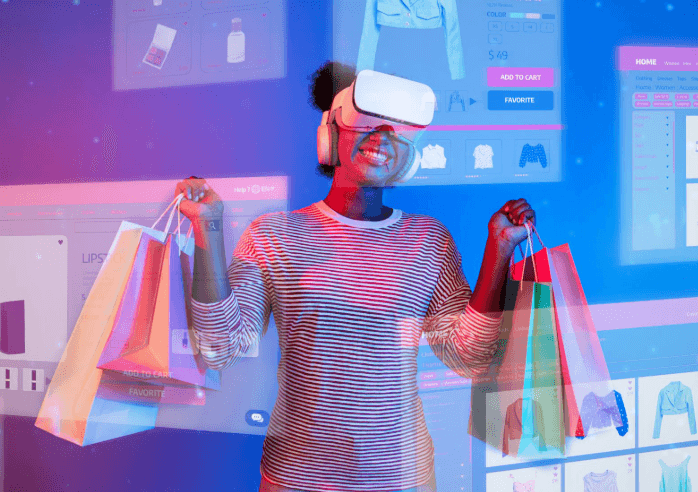
Smarter A/B Testing and Campaign Optimization
Marketing teams can now use generative AI to create and test multiple ad creatives, landing page variations, and email campaigns at scale. AI tools generate copy, imagery, and layouts, then test them in real-time against audience segments to identify top performers.
This data-driven approach allows for faster iterations and more precise campaign targeting. Brands using generative AI in e-commerce marketing are optimizing their spend while boosting ROI.
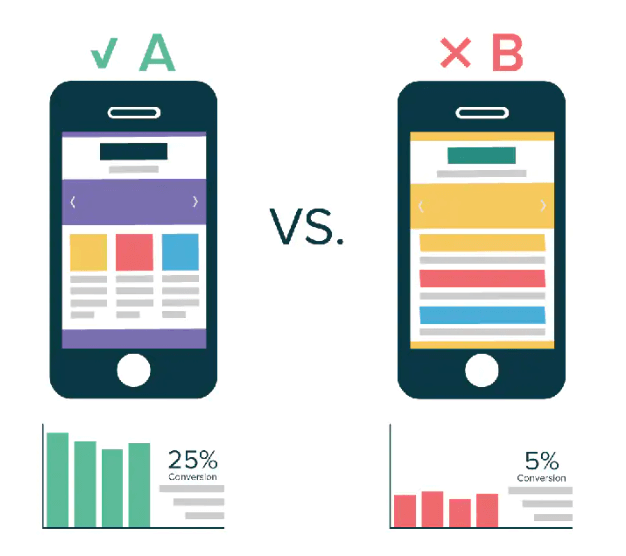
How Modelia Helps Fashion Brands Use Generative AI
Modelia is a cutting-edge platform that empowers fashion e-commerce brands to harness the full potential of generative AI. With tools built for virtual modeling, AI styling, and on-demand image generation, Modelia helps brands create stunning visuals without traditional photo shoots.
Whether you’re launching a new collection, building out seasonal campaigns, or expanding to new demographics, Modelia makes it easy to scale content production while maintaining aesthetic control. Brands save time, cut costs, and improve brand consistency across all channels.
Modelia’s generative AI tools also include background removal, recoloring, garment cloning, and AI-powered styling suggestions. These features give creative teams more control and agility in how they present their products online. As AI continues to evolve, platforms like Modelia are setting the standard for what’s possible in fashion e-commerce.

Comparison of Generative AI Use Cases in E-Commerce
Use Case | Description | Benefit |
|---|---|---|
AI Design Generation | Generate new product designs or prototypes | Faster time-to-market |
Personalized Recommendations | AI tailors products and offers to users | Improved conversion rates |
AI Virtual Models | Create model photos with diverse body types and styles | Lower cost, greater inclusivity |
Automated Product Descriptions | Generate optimized content for product pages | SEO boost and content consistency |
Visual Search | Find products from photos or screenshots | Enhanced user experience |
AI Chatbots | Handle support requests automatically | 24/7 service, reduced workload |
Trend Forecasting | Predict future trends using big data | More accurate inventory planning |
A/B Testing Automation | Generate and test multiple creative variations | Better marketing performance |
Conclusion: Why Generative AI E-Commerce Isn’t Optional Anymore
The e-commerce landscape is evolving rapidly, and generative AI is at the heart of that transformation. From smarter design to better customer service, AI-powered tools are not just nice-to-have, they’re becoming essential for staying competitive.
Generative AI in e-commerce enables faster product development, deeper customer insights, and highly personalized experiences that traditional methods simply can’t match. As customer expectations continue to rise, embracing this technology is the key to keeping pace and innovating.
If you’re ready to level up your brand with AI-powered fashion content, Modelia offers all the tools you need to succeed.
FAQ: Generative AI e-commerce
What are digital outfits and how do they work?
Digital outfits are virtual clothing designed using 3D modeling or AI tools. They can be worn on avatars in games, social media, or virtual environments, allowing users to experiment with fashion without physical garments.
Why are digital outfits becoming popular in fashion?
They offer limitless creativity, sustainable options, and cost-effective ways to showcase fashion. Brands can test new styles and consumers can express themselves digitally without producing physical waste.
How can I create my own digital outfit?
Users can create digital outfits using fashion design software, AI-powered tools, or virtual wardrobe apps. These platforms allow customization of fabrics, colors, textures, and fit to create unique digital looks.
Can digital outfits be used for real-world fashion marketing?
Yes, brands use digital outfits for marketing campaigns, virtual try-ons, and social media content. They help showcase new collections, engage audiences, and reduce the need for physical photoshoots.
How would you rate this article:
Related Articles
- Best 10 Alternatives to X-Design for AI-Enhanced Fashion Content
- Shopify vs Etsy: A Complete Comparison for Sellers
- Autumn Fashion Trends 2025: Key Styles & Outfit Ideas
- How AI Can Help You Extend and Enhance Your Images
- 5 AI Tools for Image Enhancement to Achieve Professional-Quality Results
- Best 5 AI Color Changer Tools to Instantly Transform Images and Visual Content
- 5 AI Fashion Design Tools for Modern Fashion Designers
- How to Refashion Clothing Into Fresh New Styles
- Virtual Makeup Try-On: How AR Technology is Revolutionizing Beauty Shopping
- The Best Sustainable Fashion Brands Changing the Industry






